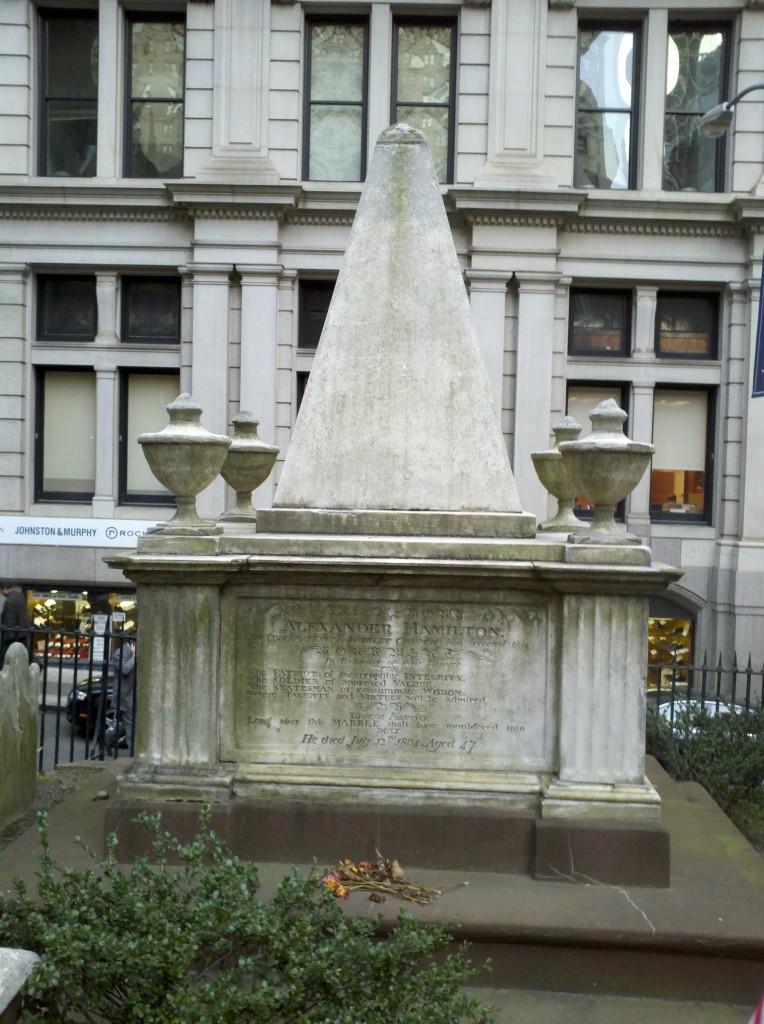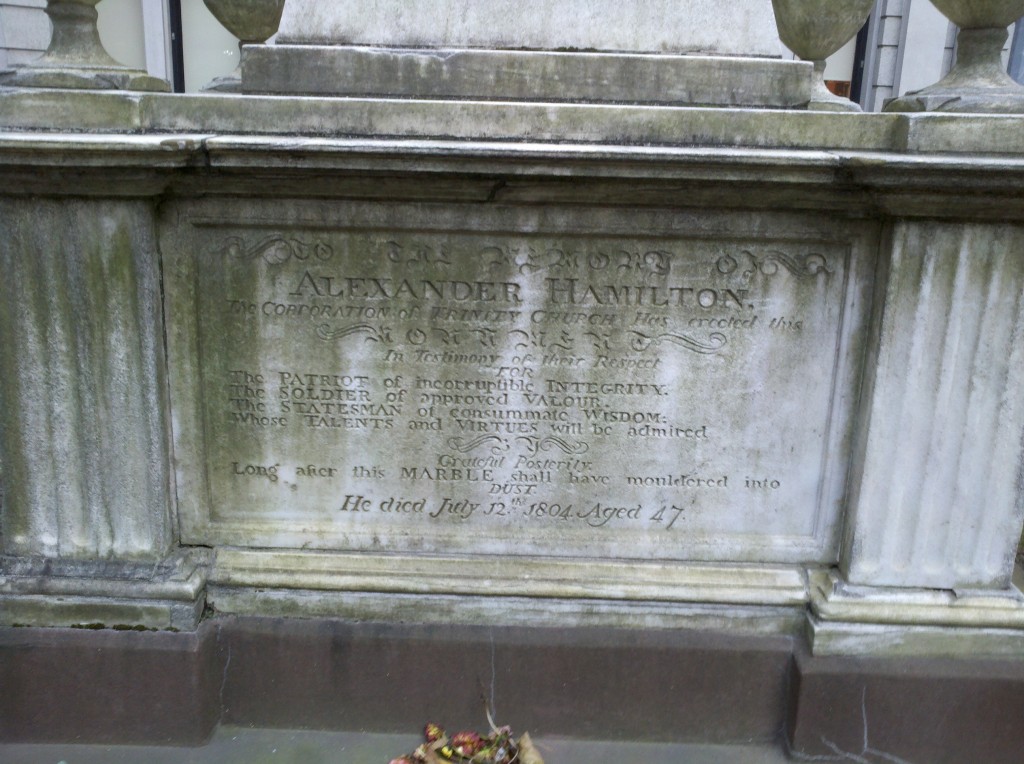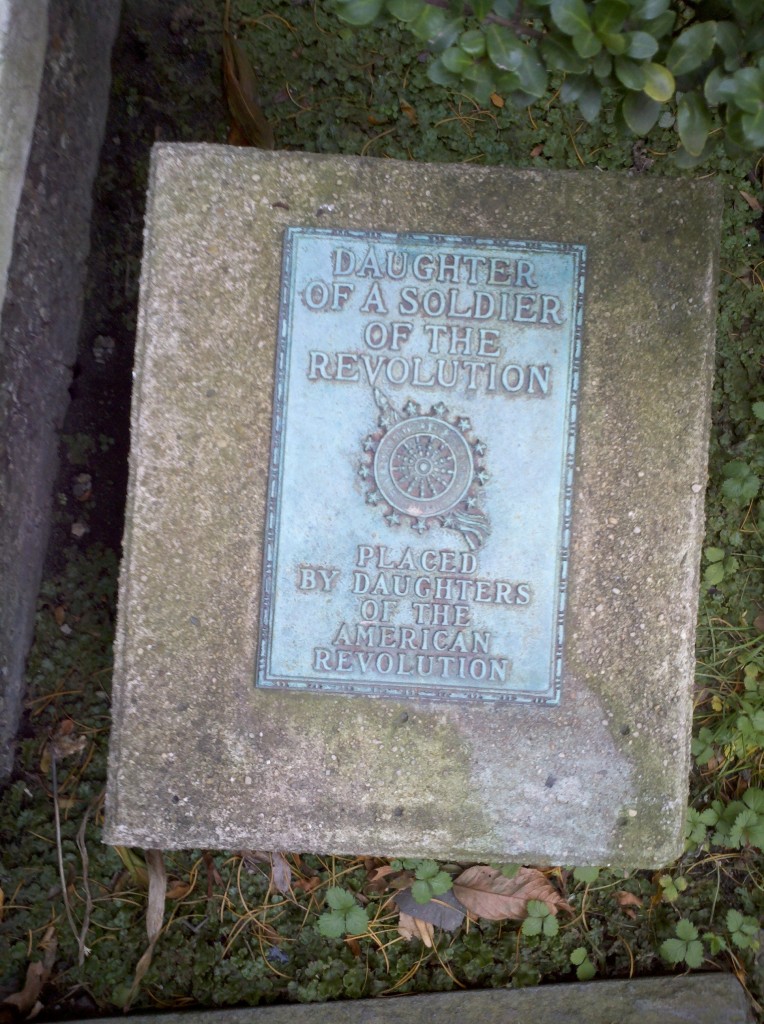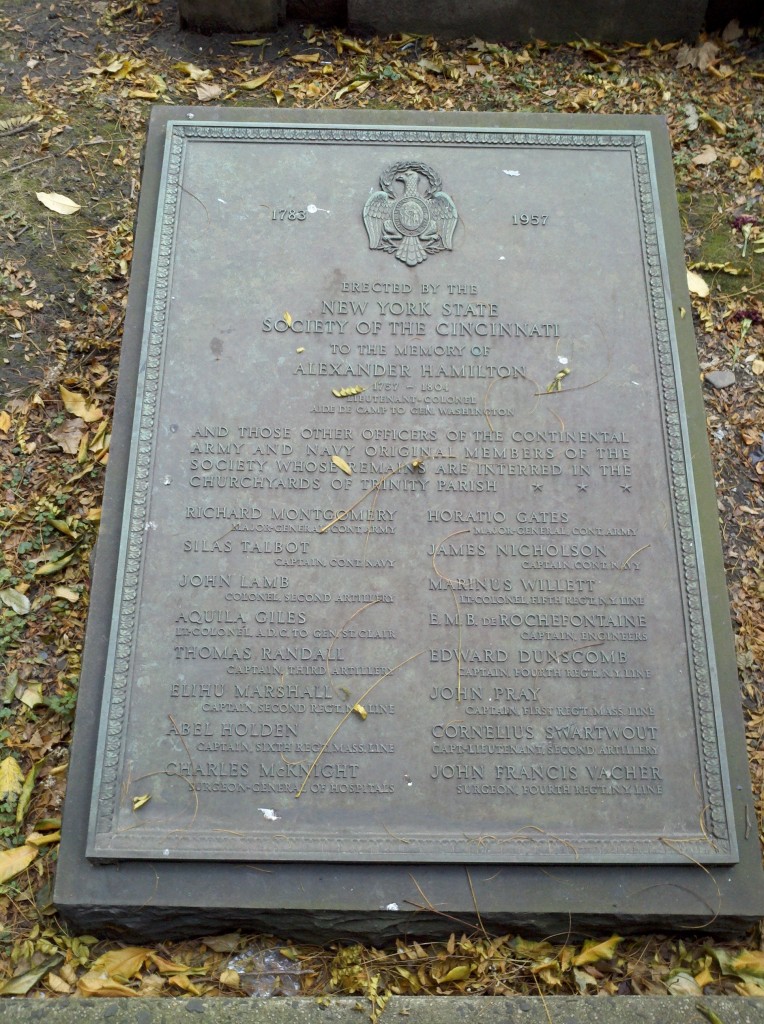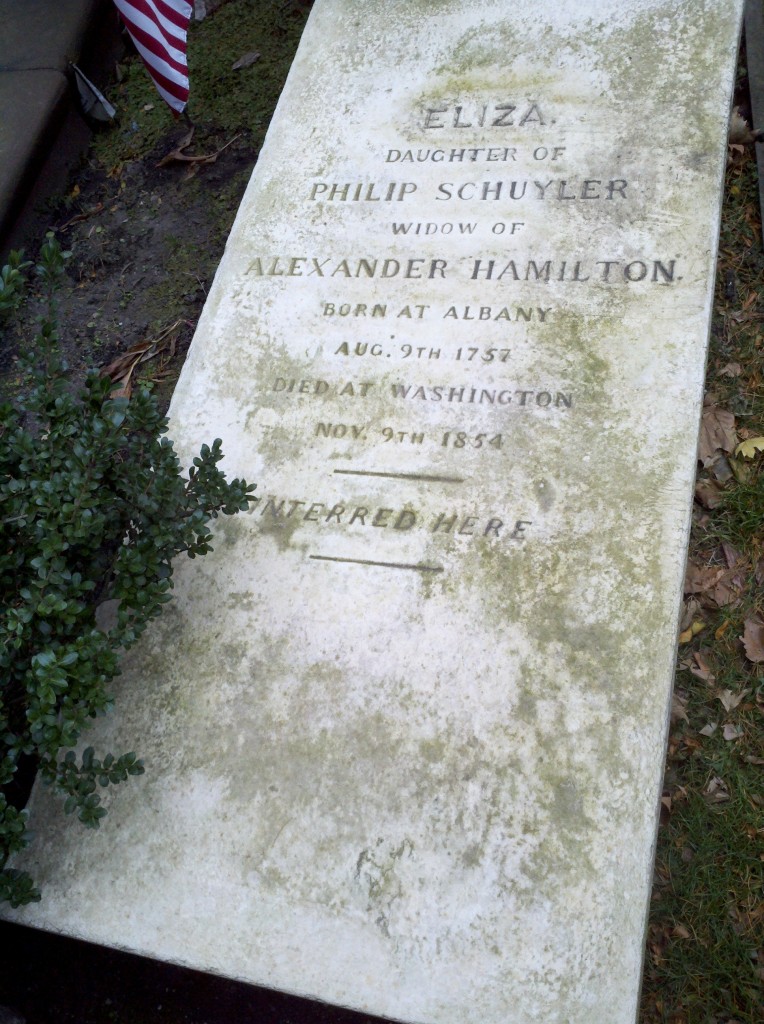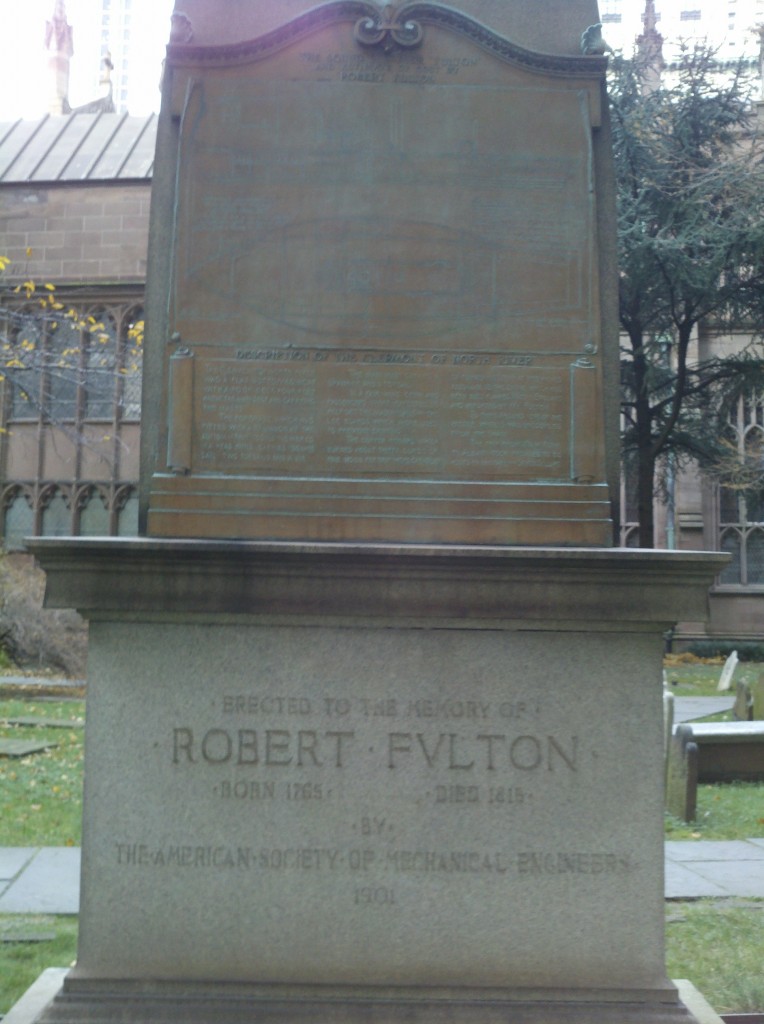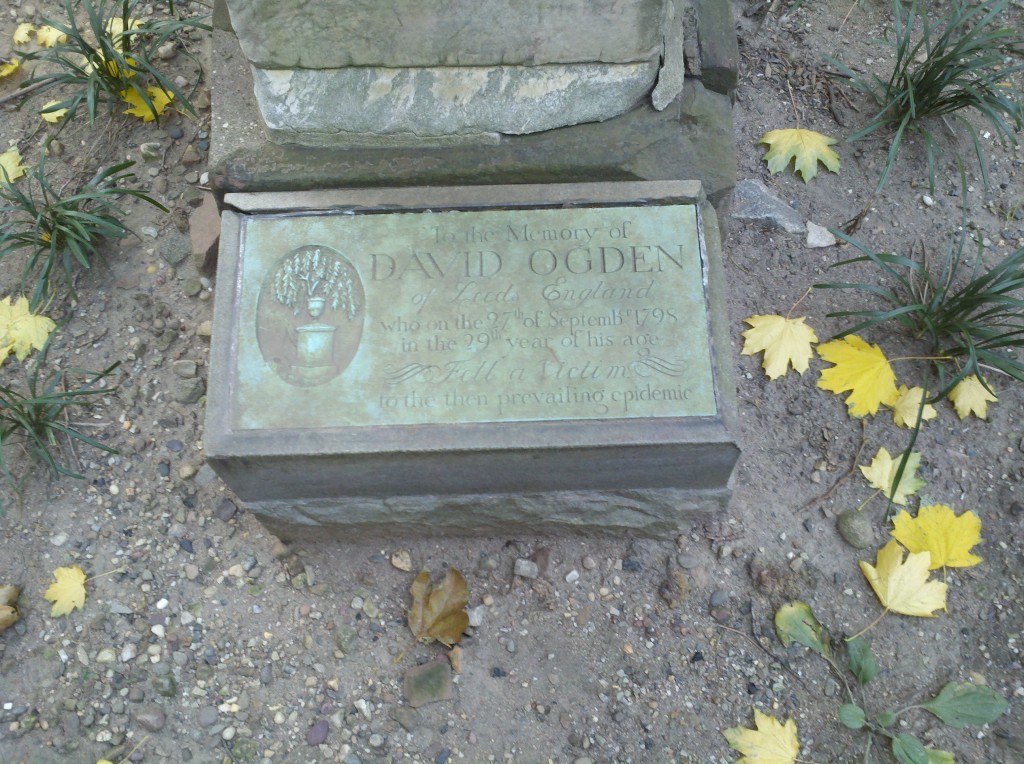Trinity Church in downtown Manhattan has a famous cemetery, in which many participants in the American revolution and the early years of our Republic were buried–most famously Alexander Hamilton.
The most famous permanent resident at the cemetery of Trinity Church is none other than Alexander Hamilton who was buried here after his untimely death at the age of 47.
The inscription reads:
Alexander Hamilton: The Corporation of Trinity Church has erected this monument in testimony of their respect for The Patriot of incorruptible Integrity, The Solider of approved Valour, The Statesman of consummate Wisdom, Whose Talents and Virtues will eb Admired in Graceful Posterity, Long after the Marble, shall have moistened into Dust. He died July 12, 1804, Aged 47.
The New York Society of the Cincinnati who erected a plaque in memory of Hamilton, and other members of the Society interred at Trinity parish, including General Horatio Gates, the leader of the Battles of Saratoga.
Also buried was Hamilton’s wife Eliza Hamilton. Alexander cheated on Eliza–his integrity was quite corruptible.
In addition to Hamilton, Robert Fulton, inventor of the steam boat was buried in Trinity Cemetery. Perhaps what was coolest is that a model of the steam boat design was etched into the tomb.
Speaking of Fulton, there was also a marker for a David Ogden, who I would be willing to bet was related to Aaron Ogden, the plaintiff in Gibbons v. Ogden. Of course, Aaron Ogden tried to defy Robert Fulton and Robert Livingston’s monopoly on steamboat service between New York and New Jersey. So Fulton was buried in the same lot as the ancestor of the guy who sued him in Gibbons v. Ogden and broke up his unconstitutional monopoly! Aaron would go on to serve as the Governor of New Jersey.
And speaking of Robert Livingston, he served on the New York Court of Appeals for 25 years, and negotiated the Louisiana Purchase as Jefferson’s Minister to France. Livingston was also the author of the dissent in Pierson v. Post! [Update: My memory failed me. It was Brokholst Livingston, who authored the Pierson dissent. I gather they are related].
And who wrote the majority in Pierson? Daniel Tompkins of course, who went on to serve as Governor of New York and Vice President for James Monroe. And where did Tompkins die? In a neighborhood of Staten Island, now known as Tompkinsville.
How much fun would it be to play 6 degrees of Alexander Hamilton for the revolutionary era. Kevin Bacon’s got nothing on Alex Hammy (that pun is probably making all the residents of Trinity Church roll over in their graves).
Note: This is not the Church of the Holy Trinity from the famous Supreme Court case, Church of the Holy Trinity v. United States. The physical church at issue in that case is no longer in existence–though that congregation at 316 E. 88th Street traces its lineage back to the 18th Century,
Oh, and while I’m at it, Justice Josiah Brewer, who authored Church of the Holy Trinity, was the son of a Reverend, and the nephew of Justice Stephen Field.

